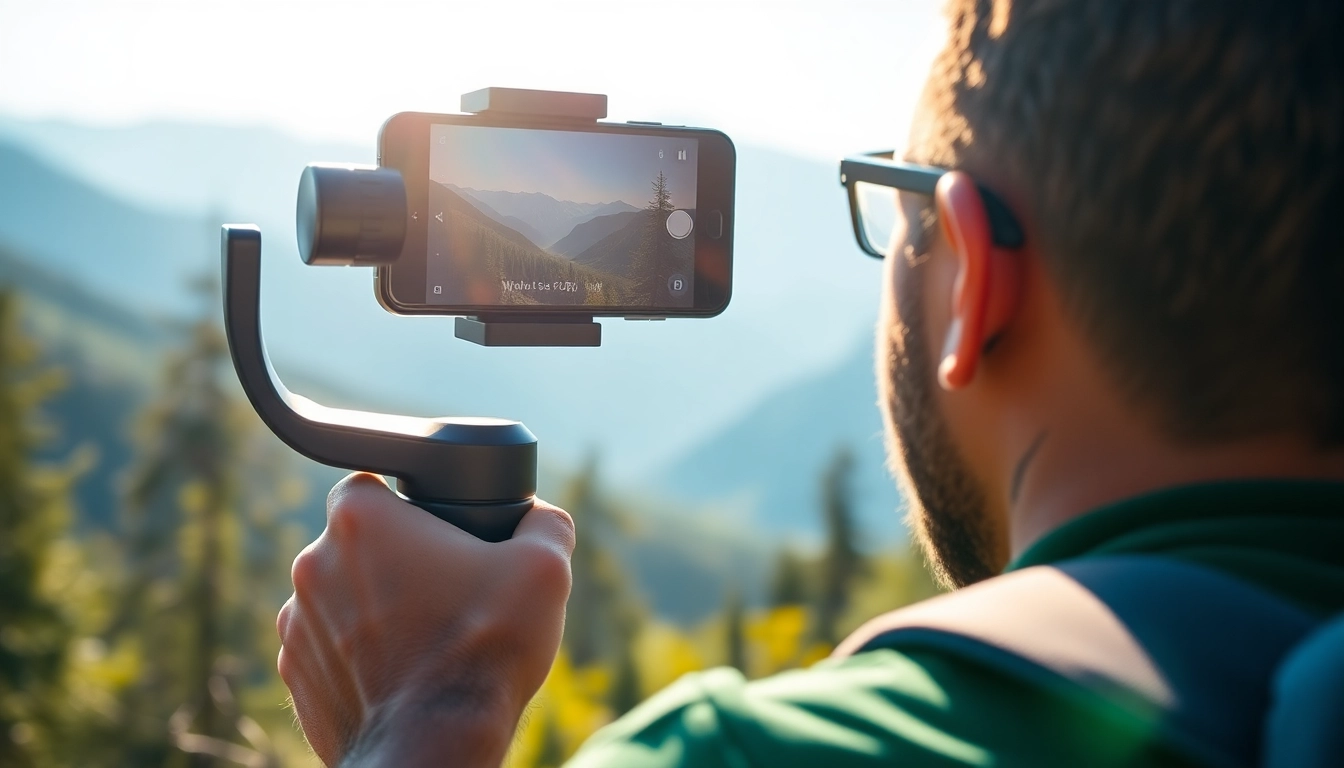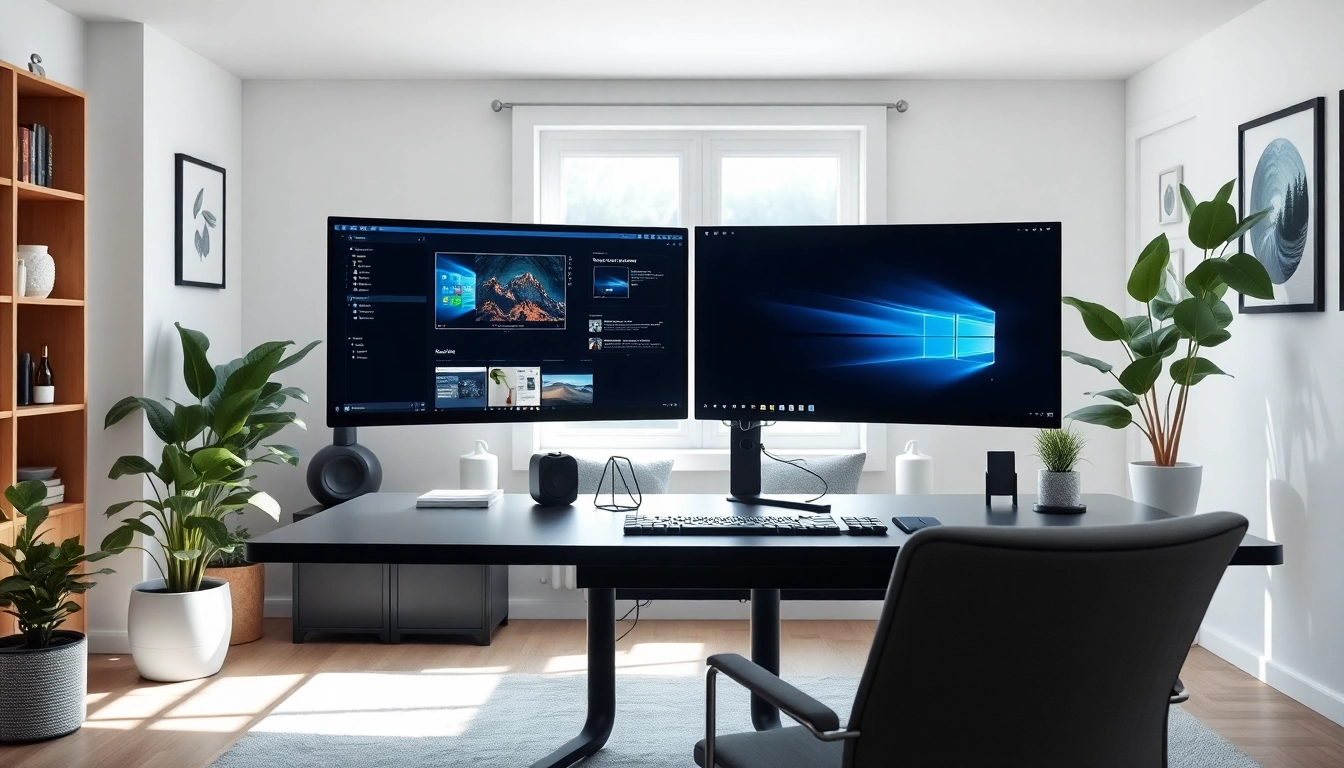Understanding Gimbals: The Essential Tool for Videographers
What is a Gimbal?
A gimbal is a stabilizing device that allows an object to rotate about a single axis while remaining level. In the context of videography, gimbals are utilized to secure cameras and smartphones, ensuring smooth, stabilized footage regardless of the movement of the operator. Typically, a gimbal comprises multiple motors and sensors that detect the camera’s orientation and make real-time adjustments to suppress unwanted motion. This technology has become indispensable for content creators, enabling them to produce high-quality videos with minimal effort.
How Gimbals Work
The working principle of a gimbal hinges on its dynamic balancing capabilities. Most gimbals use a system of three axes—pitch, roll, and yaw—to stabilize the camera. Here’s a brief overview of these axes:
- Pitch: Controls the up and down movement of the camera.
- Roll: Stabilizes any side-to-side tilt in the camera.
- Yaw: Manages the left and right rotation of the camera.
By effectively utilizing these axes, gimbals can keep the camera level even while the operator walks, runs, or performs complex movements. Advanced models may include software features like object tracking and panoramic shooting, further enhancing their usability. For those eager to explore the potential of a gimbal, understanding these mechanics is the first step toward creating smooth and professional-looking videos.
Benefits of Using a Gimbal
Integrating a gimbal into a videography setup has numerous advantages:
- Enhanced Stability: A gimbal significantly reduces shaky footage, making videos more visually appealing.
- Improved Professionalism: Utilizing a gimbal can elevate the perceived quality of your content, making it more engaging and watchable.
- Versatility: Gimbals are compatible with a range of devices, including smartphones and DSLR cameras, catering to various filming needs.
- Creative Freedom: With stabilized footage, content creators are free to explore dynamic movements and angles without sacrificing quality.
Ultimately, the use of a gimbal can lead to higher audience retention rates and improved storytelling through visually immersive footage.
Choosing the Right Gimbal for Your Needs
Factors to Consider
Selecting the appropriate gimbal requires careful consideration of several factors:
- Device Compatibility: Ensure the gimbal can accommodate the weight and dimensions of your camera or smartphone.
- Portability: If you need to film on the go, opt for a lightweight and compact design that’s easy to transport.
- Battery Life: Look for gimbals with longer battery life, especially if you’ll be shooting for several hours.
- Features: Determine which advanced features, such as object tracking or smartphone app integration, are essential for your filming style.
Different Types of Gimbals
Gimbals are broadly categorized into three types:
- Handheld Gimbals: These are the most common and are designed for easy operation by the user without requiring any additional supports.
- Camera Gimbals: These are designed for larger camera systems and often come with more robust stabilization mechanics.
- Drone Gimbals: Specifically built for drones, these gimbals are designed to counteract the movements of the drone during flight, ensuring that the captured footage is stable.
Price Ranges and Features
Understanding the cost associated with gimbals can help you budget accordingly:
- Entry-Level Gimbals: Priced between $50 to $150, these gimbals often provide basic stabilization features and are suitable for casual users.
- Mid-Range Gimbals: Ranging from $150 to $300, these offer better motors, longer battery life, and more features, appealing to semi-professionals.
- Professional Gimbals: Starting from $300 and going up to $1000 or more, these gimbals provide advanced stabilization, more robust construction, and better performance in challenging conditions.
Setting Up Your Gimbal
Initial Setup Steps
Setting up a gimbal may seem daunting, but following these steps can simplify the process:
- Unbox and Assemble: Carefully remove the gimbal from its packaging, and assemble it as per the manufacturer’s instructions.
- Attach the Camera: Mount your camera or smartphone securely onto the gimbal, ensuring it is balanced.
- Power On: Turn on the gimbal. Many models will automatically calibrate themselves when powered on for the first time.
Calibration and Testing
Calibration is crucial to obtain optimal performance from your gimbal:
- Static Balance: Refer to your gimbal’s manual to balance the camera manually. Adjust the camera’s position until the gimbal can remain still without assistance.
- Dynamic Testing: Perform a test run by walking or moving with the gimbal. Observe any vibrations or jerks and adjust the settings accordingly.
Common Troubleshooting Tips
While using a gimbal, users may encounter issues. Here are some common troubleshooting tips:
- Shaky Footage: Recheck camera balance. An unbalanced camera can lead to significantly shaky footage.
- Inconsistent Response: Ensure that the gimbal firmware is up-to-date, as manufacturers often release updates that enhance performance.
- Battery Issues: If the battery isn’t holding a charge, consider replacing it or checking all connections.
Techniques for Using a Gimbal Effectively
Stabilization Techniques
To maximize a gimbal’s effectiveness, implement these stabilization techniques:
- Using Slow Movements: Quick movements can jostle the gimbal and lead to instability. Opt for slow, deliberate maneuvers.
- Keep Things Level: Maintain a steady hand at the center of the gimbal handle, allowing the gimbal to naturally counteract any motion.
- Posture and Stance: Adopting a stable stance can significantly aid in reducing unintentional movements during filming.
Movement Patterns for Capturing Smooth Footage
Different filming movement patterns can lead to various artistic effects:
- Tracking Shots: Move parallel to your subject, keeping them centered in the frame.
- Crane Shots: Elevate the camera while moving sideways to create dynamic vertical movement.
- Reveals: Start with the camera focused on something in the foreground and then move it to reveal the background, enhancing the depth of the shot.
Advanced Shooting Techniques
For professionals looking to enhance their footage further, consider these advanced techniques:
- Hyperlapse: Utilize the gimbal to create hyperlapse videos by moving the camera in fixed increments for a time-lapse effect.
- Orbital Shots: Use the gimbal to create circular movements around the subject, adding depth and dynamic angles to your shots.
- Vertical Shots: Shoot from unexpected angles by moving the camera up or down while maintaining stability for impactful visuals.
Maintaining Your Gimbal for Longevity
Regular Maintenance Tips
To ensure the longevity and optimal performance of your gimbal, adhere to regular maintenance practices:
- Regular Cleaning: Wipe down the gimbal with a soft cloth to remove dust and grime that can hinder functionality.
- Battery Care: Follow the manufacturer’s recommendations for charging and storing batteries.
- Software Updates: Regularly check for firmware updates that enhance performance and stability.
Storage and Protection Guidelines
Proper storage prolongs your gimbal’s life. Consider these guidelines:
- Protective Cases: Always store your gimbal in a protective case to prevent physical damage.
- Avoid Extreme Temperatures: Keep the gimbal away from excessive heat or cold to maintain the integrity of its motors and batteries.
- Secure Handling: Always handle the gimbal with care to avoid dropping it or subjecting it to undue stress.
When to Consider Upgrading
Knowing when to upgrade your gimbal can make a significant difference in your filming process:
- Performance Limitations: If your current gimbal can’t keep up with your shooting style or device weight, it may be time to upgrade.
- Lack of Features: As filming requirements evolve, the desire for more advanced features may prompt an upgrade.
- Wear and Tear: Physical damage or performance degradation over time may necessitate acquiring a new unit.
Ultimately, investing in a suitable gimbal tailored to your specific needs will greatly enhance your videography and content creation capabilities. By understanding the intricacies of gimbals and implementing best practices, anyone from a hobbyist to a professional can capture stunning, stable footage that captivates audiences.



